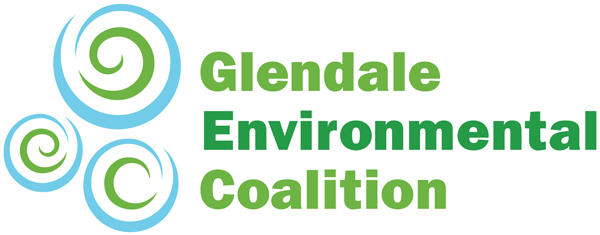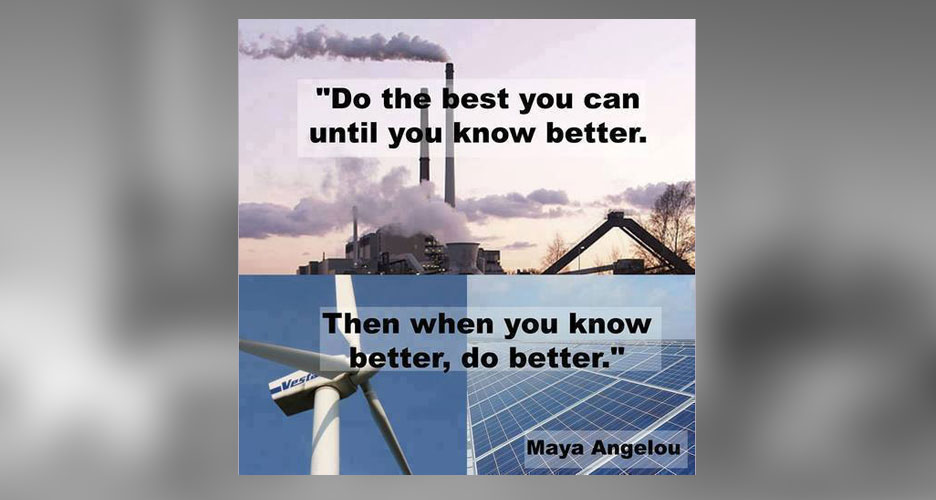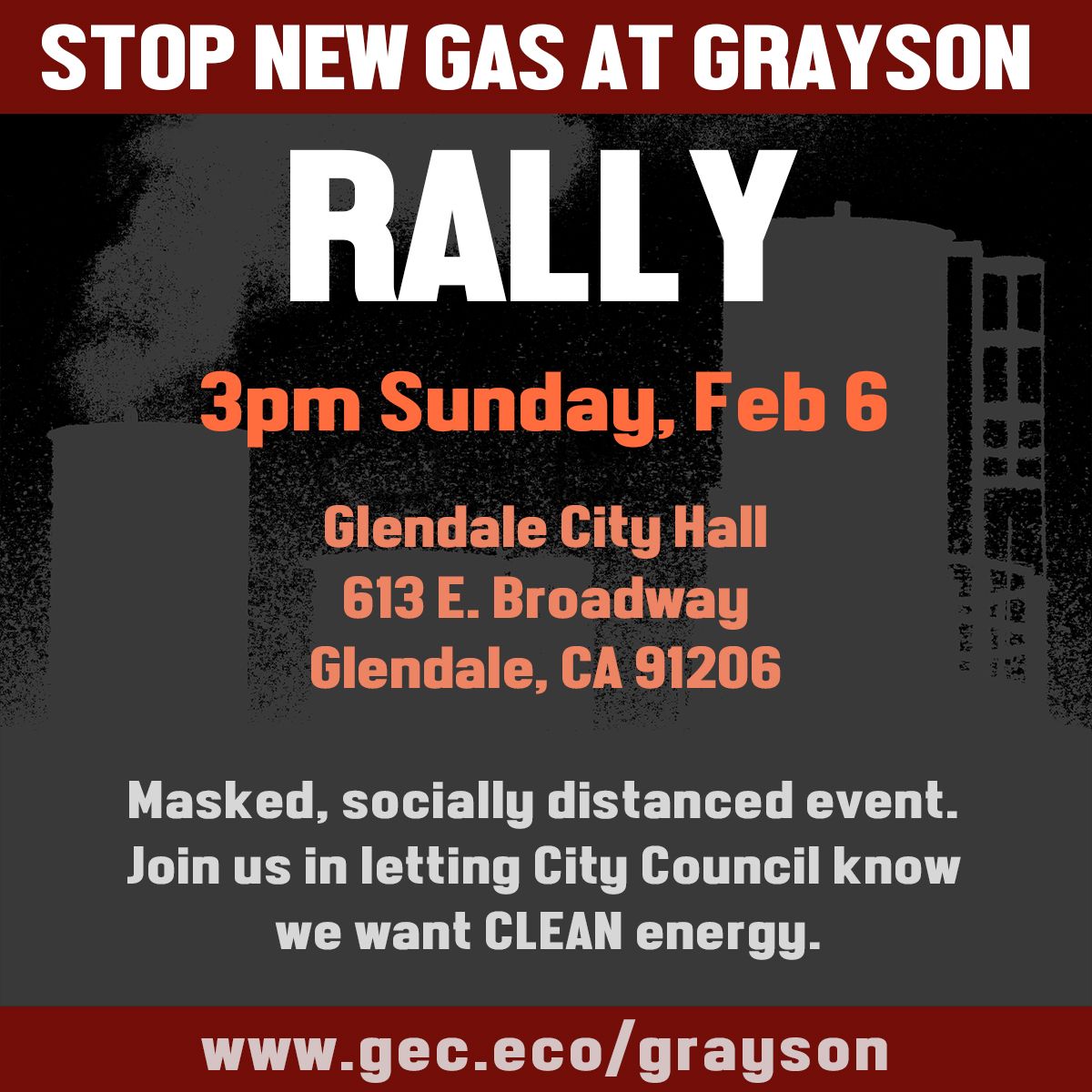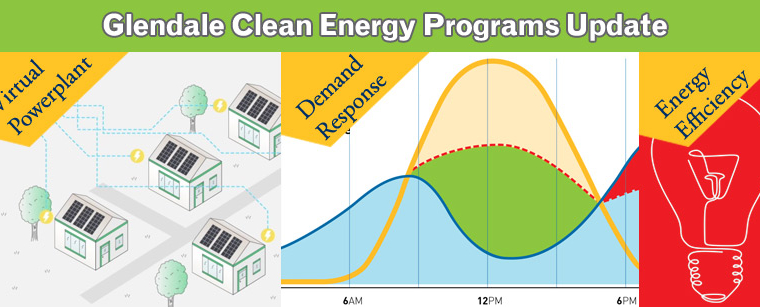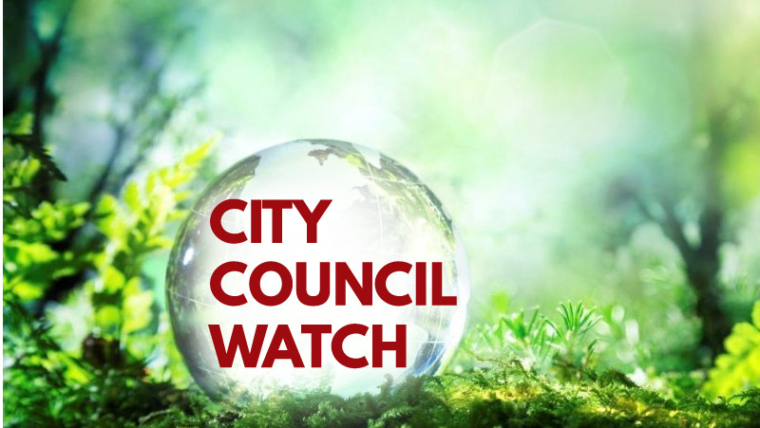At its meeting February 3, the Sustainability Commission didn’t agree on a recommendation to city council for the Grayson Repowering EIR, with two commissioners questioning GWP’s assumptions, assertion that fossil fuels are needed for reliability, and lack of transparency about the Grayson Repowering project’s significant cost impacts to ratepayers or taxpayers. GWP’s insistence that it must build major fossil fuel infrastructure to meet its peak demand estimates swayed two other members.
Vice Chair Rondi Werner motioned that the commision recommend to city council that it is unable to support the Grayson Repowering EIR because they don’t feel it meets their own standards in the most reliable, economic, and sustainable way, and it does not adequately consider low-emissions, nature-based, and equitable people-based sustainable development solutions. The motion was seconded by Commissioner Pinkerton.
The other two commissioners present at the meeting, Khanjian and Kartounian, voted against the motion. With no majority support either way, the staff attorney present said they would provide a summary of the meeting and commentary in a report to city council. Vice Chair Werner wrapped up by noting that far more transparency was needed given the huge dollar amounts – $500 million – for all the programs, and that the public needs to know where the monies are going to come from.
Exactly how we can get local and reliable energy, what is a good investment, and when we fully commit to 100% clean energy were the main issues on which Werner, Pinkerton, GEC, the Sierra Club, and several callers focused.
How to get to reliable energy
GWP has had three years to figure out how to design a reliable, local clean energy system. It continues to insist that fossil fuel generation is the only way forward to meet peak demand or in emergencies. This viewpoint limits solar potential to centralized solar farms at Grayson or open land, and seems to completely disregard the huge potential for solar installation on Glendale rooftops! That combined with a lot more battery storage distributed throughout the city could end up being more reliable in an emergency! GEC made a presentation to the Sustainability Commission using GWP’s own numbers and concluding that GWP doesn’t need all the fossil fuel infrastructure it is requesting. GEC also noted that during a major earthquake, gas fuel supplies are as likely to be disrupted as long-distance transmission and therefore not as reliable as local, clean, distributed energy!
What is a good investment?
GEC also sent an advance letter to the Sustainability Commission showing that the huge amount of reserve energy (expensive insurance) GWP is proposing isn’t necessary. At the meeting, GEC noted that so much risk aversion creates a new risk of dramatically overbuilding. The utility argues that this investment will avoid the cost of repairing old equipment, but that cost is going away no matter what. We can take that savings and apply it to local solar and storage. Any amount spent on gas equipment isn’t available for clean energy projects. Meanwhile, the public and the world pays the externalized costs of putting more carbon in the air: drought, wildfire, and other climate impacts.
Eliminating or reducing to only two new engines could make more funds available for investments in clean energy, including newer long-duration storage options. We want to maximize clean energy and minimize gas.
A Sierra Club presentation also urged no further investment in fossil fuels, asserted these were not necessary, and that a reliable clean energy future needs to be the urgent goal now.
When do we commit to 100% clean energy?
Everyone agrees we need a rapid transition away from fossil fuels. GWP claims that the five engines it is proposing will be a bridge to 100% clean energy because they will be converted to burning green hydrogen. This is consistent with their preferred way forward, a centralized system. GEC’s presenters noted that green hydrogen generation technology is in the early stages of development and there are many unknown related costs (reconfiguring ICE units, repiping for delivery, hydrogen supply).
All investments should move Glendale toward, rather than away, from its clean energy goals. Glendale still has a long journey to get to 100% clean energy. This project is a major decision point that will move us backwards or forwards.
Public comments were varied. One caller seemed to echo the (erroneous) assumption that the only place GWP can put a lot of solar is at the Grayson site (again, completely ignoring the huge potential of Glendale rooftops). Three callers seem to have been given the same very short script. They each said they were a resident of Glendale, wanted an electric car, and supported the gas plus battery project.
Most of the public comments were eloquently opposed to the Grayson Repowering EIR’s fossil fuel components, asked the commission to demand clean energy instead, questioned the outdated and dangerous continued reliance on fossil fuels, cited the global awareness of the need to transition away from fossil fuels to preserve our collective future, and asked for an outside expert to evaluate Glendale’s energy planning. The general public wants clean energy NOW, that is clear. What’s also clear is that our utility doesn’t know how to give up its polluting habits.
FINAL ACTIONS TO TAKE NOW
EMAIL CITY COUNCIL
Mayor Devine and Councilmembers Agajanian, Brotman, Kassakhian and Najarian
pdevine@glendaleca.gov
vagajanian@glendaleca.gov
akassakhian@glendaleca.gov
anajarian@glendaleca.gov
dbrotman@glendaleca.gov
WATCH THE CITY COUNCIL MEETING
My Glendale YouTube Channel
on Tuesday, February 15
Discover more from Glendale Environmental Coalition
Subscribe to get the latest posts sent to your email.
